«There are situations here where, if we did nothing and there was very heavy rain, as can happen, there could be serious problems for houses and localities. The risk would be great in Odeceixe, but also in the São Miguel area and in other places", explained Joaquim Castelão Rodrigues, regional director of the Institute for Nature Conservation and Forests (ICNF) in the Algarve, speaking to Sul Informação.
The ICNF, together with the Chambers of Aljezur and Odemira, and with the support of other entities, such as the Portuguese Environment Agency, is carrying out "emergency stabilization" work, in water lines and slopes, in the area of Odeceixe (Aljezur) and São Miguel (Odemira), affected by the big fire last August. These works were, on Tuesday, visited by the Secretary of State for Nature Conservation.
For about three weeks now, ICNF firefighters have been on the ground, together with forestry firefighters from the Municipalities themselves, cleaning the water lines of debris, burnt trees and bushes, rubbish, a lot of rubbish, as well as stabilizing some hydraulic correction works that had been carried out years ago, precisely to break the force of the torrents, and which had long been blocked or covered by brambles and other vegetation.
Barriers are also being placed on the ground to control erosion and protect the slopes, made with braids made from the trunks and branches of burned trees.
Everything to prevent the soil from the slopes from washing down with the first rains, worsening erosion and creating torrents of water, mud, stones and forest debris that could cause serious damage further down, in the town of Odeceixe or in certain areas of houses, close to São Miguel and Baiona.
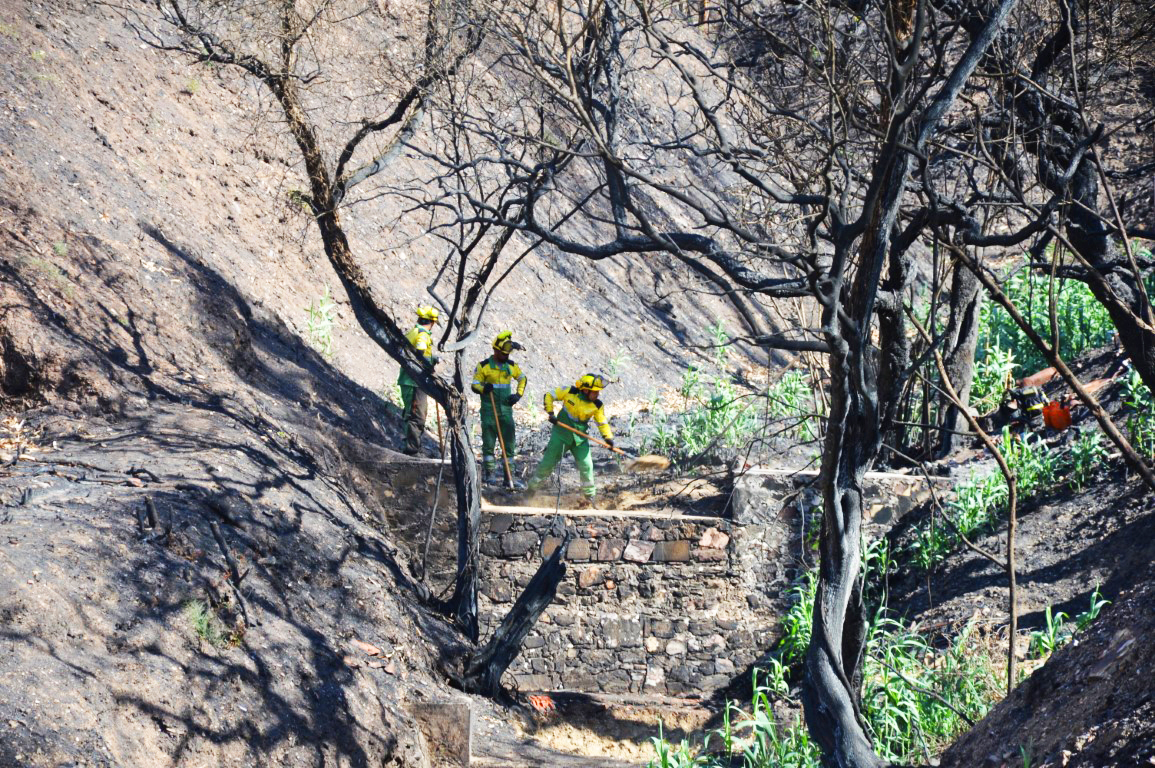
Nuno Sequeira, member of the ICNF Board of Directors and responsible for the area of rural fires, explained to the journalists present – RTP and Sul Informação – that the objective of the work is “to unblock the path of water and recover some torrential correction works, which were already carried out, precisely to minimize the danger of floods. Those walls reduce the speed of water flow, reaching the town with less energy and passing through the appropriate areas without causing damage».
The thing is, as José Oliveira, the young president of the Odeceixe Parish Council, pointed out, the village, located on a hillside, is «crossed by a series of streams and water lines» that end up at the Seixe river, below, in the valley.
Nuno Sequeira added that emergency work after the fire is intended precisely to ensure that, when it rains, the water “causes as little damage as possible. We are taking away its speed and energy, because, by reducing energy, it then drags less sediment, less vegetation. There was a lot of vegetation that was removed in this intervention, which means that the water runs more naturally along its natural bed, causing less damage».
José Gonçalves, president of the Chamber of Aljezur, who accompanied the visit of Secretary of State João Paulo Catarino, confessed to journalists that, despite being "more relaxed" with the progress of work, he is still "worried". Why? «Let's imagine that it starts to rain heavily from one day to the next. If we think about the pipelines that are underneath the town of Odeceixe, which channel all these water lines, imagine what all this volume of debris, earth would be like, clogging it all up... it could cause serious problems in Odeceixe ».
Precisely to try to prevent this from happening, the ongoing emergency intervention also involves unblocking the hydraulic passages and drainage channels, which cross the urban area of Odeceixe, and which, as it has now emerged, had not been cleaned for many years.
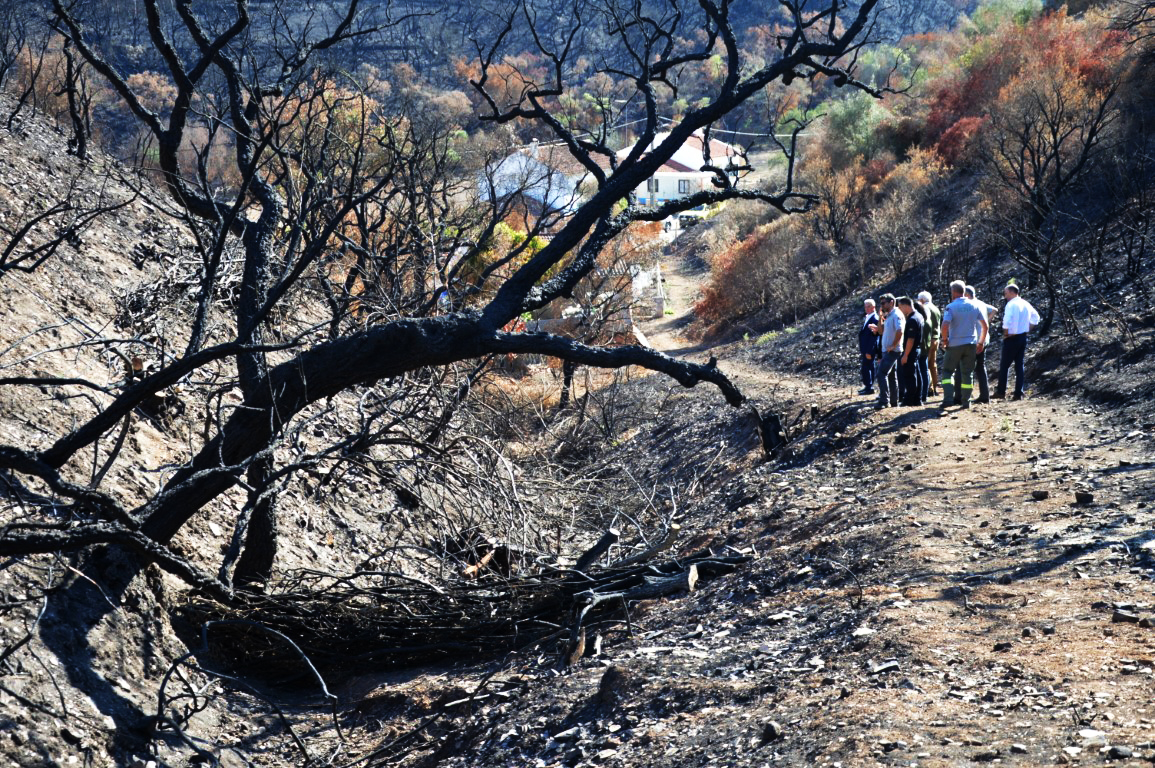
But the ICNF's concerns, in this vast area that integrates the Natural Park of Southwest Alentejano and Costa Vicentina, are not just concentrated in Odeceixe. On the Alentejo side, where the fire even started on August 5th, there are also areas where emergency stabilization is already advancing.
This is the case of a place curiously called Ribeira Seca, behind the São Miguel campsite, where there is even a house built decades ago in the middle of the water line. The river may be dry... but, as happens in these areas, due to the torrential regime, when it rains, the torrent gains strength and can sweep away everything in its path, even a house.
From the water line above, upstream of the house, on the hillside, everything is being cleaned, at the same time that sappers build barriers with braided branches, in order to contain the fury of a possible flood. Damage is avoided, but soil erosion is also reduced.
Of the 7542 hectares affected by the fire that started on August 5th and lasted until the 11th, affecting areas of the municipality of Odemira (5542 ha, 73% of the total), Aljezur (1636 ha, 22%) and Monchique (364 ha, 5%), these stabilization and emergency cleaning works are being carried out «in an area which exceeds 500 hectares, but in small pockets», revealed Nuno Sequeira, from ICNF.
There are more than 30 people on the ground, including ICNF and City Council operatives, firefighters and forestry sappers, and some heavy machinery. According to Nuno Sequeira's calculations, there is still work for another three weeks.
«It is a difficult job, which requires a high level of technical competence, whether in terms of selecting locations or in terms of those who carry it out». Difficult and very necessary.
Photos: Elisabete Rodrigues | Sul Informação
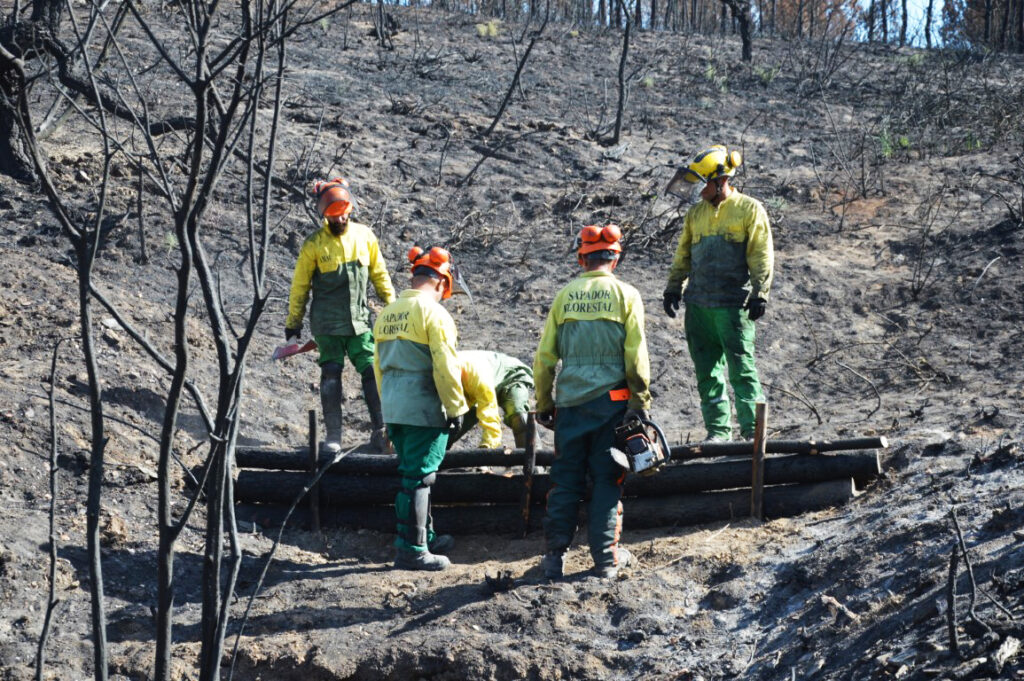



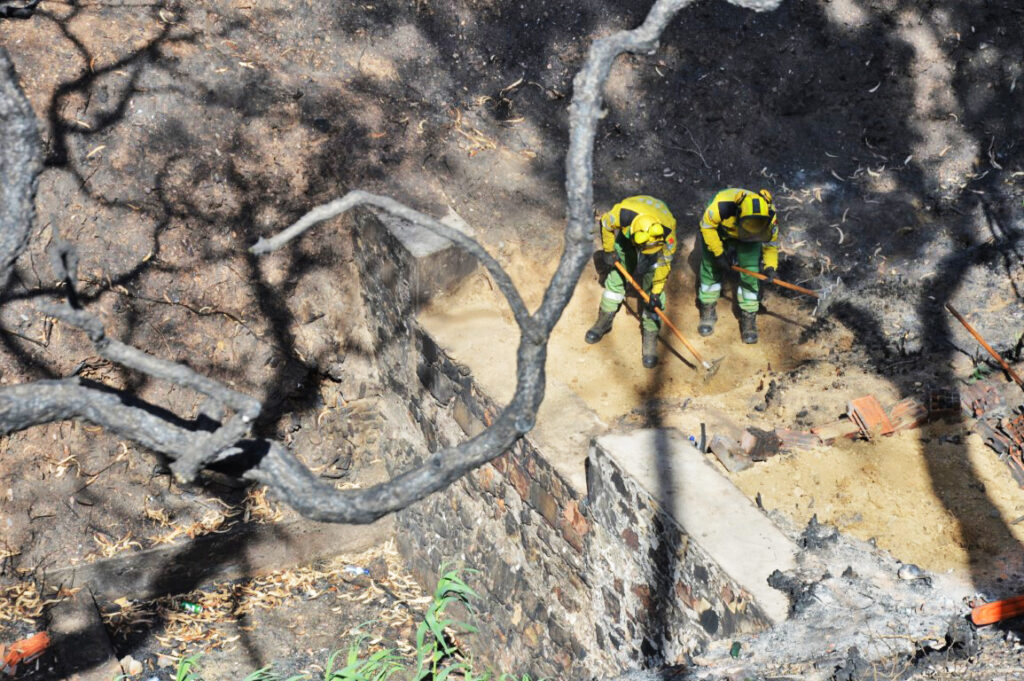
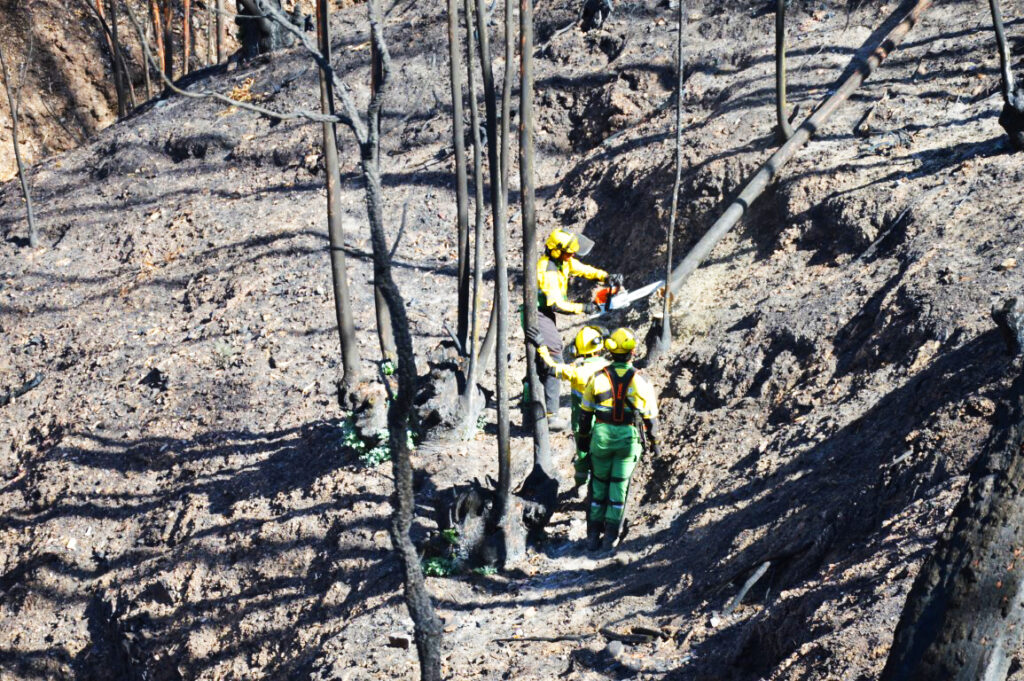



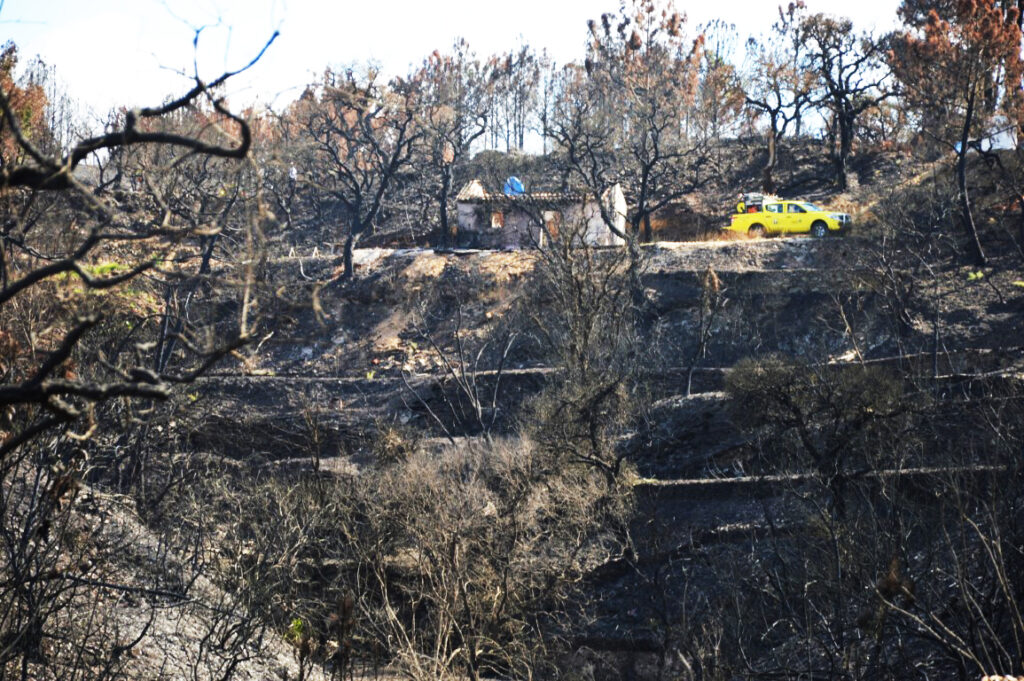
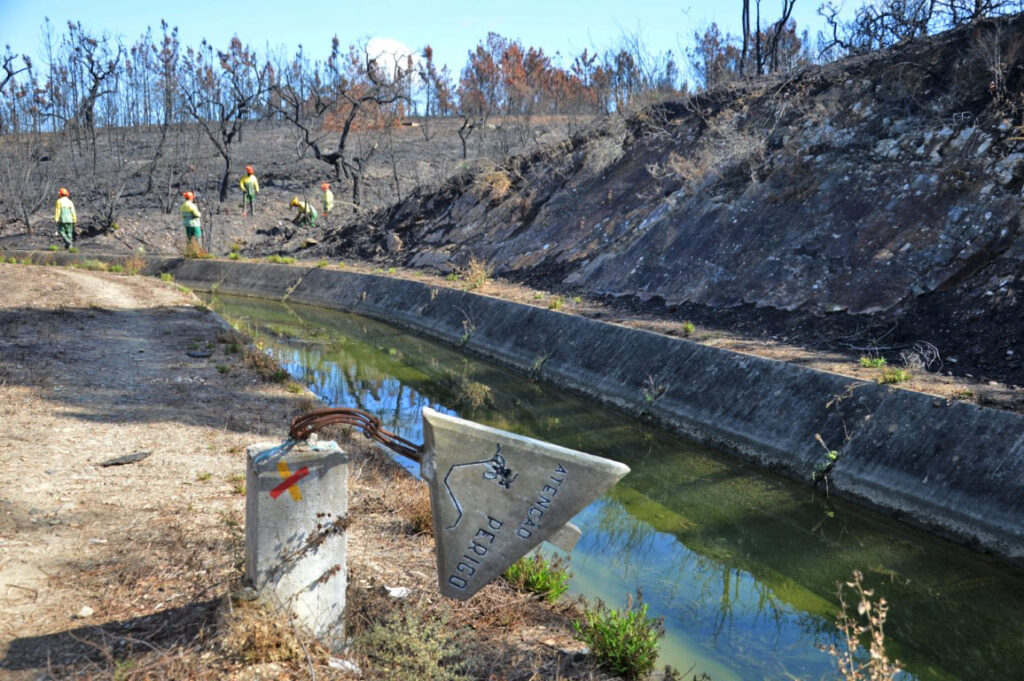

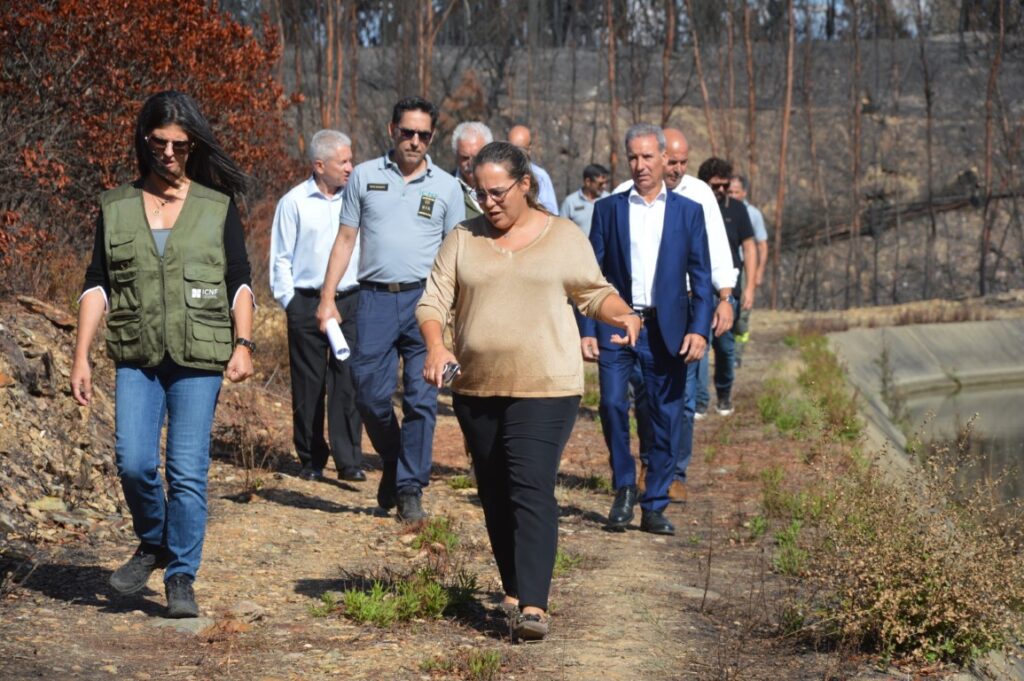


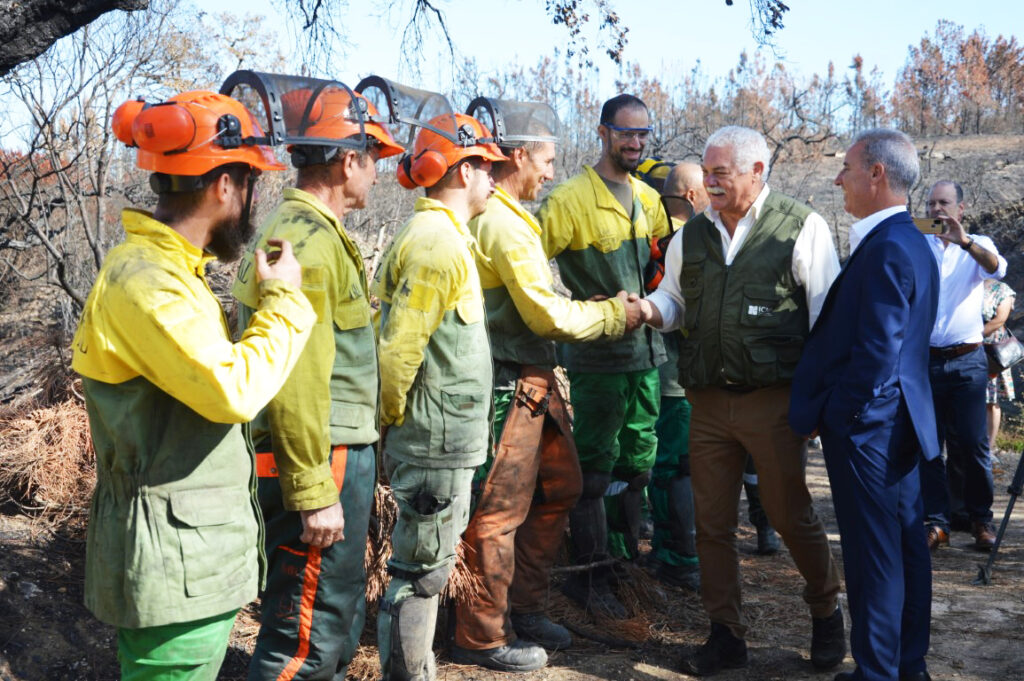

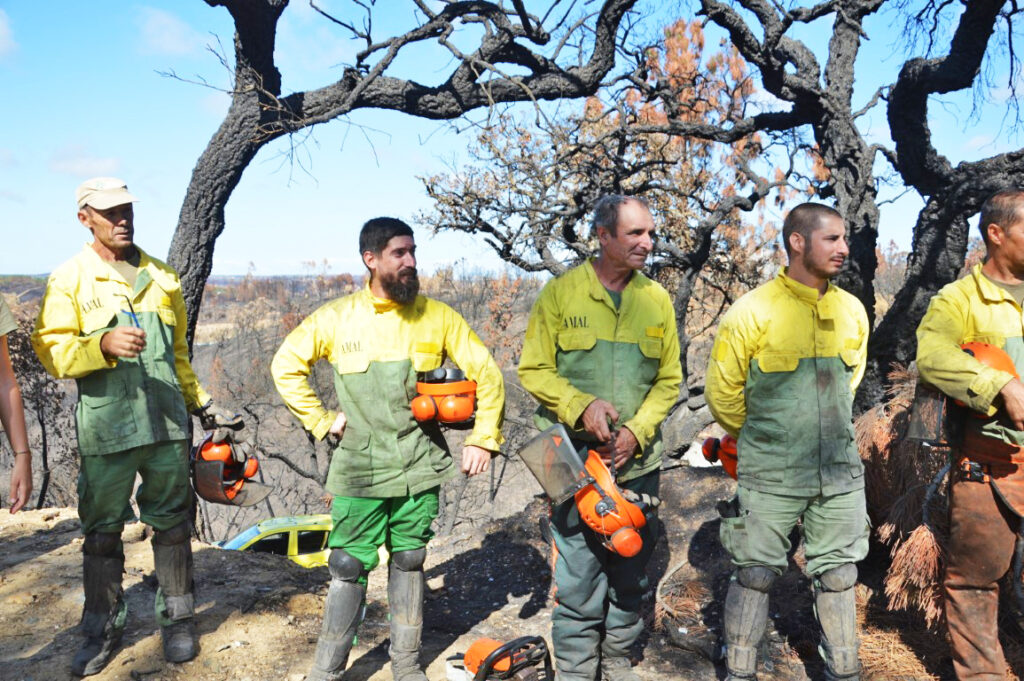
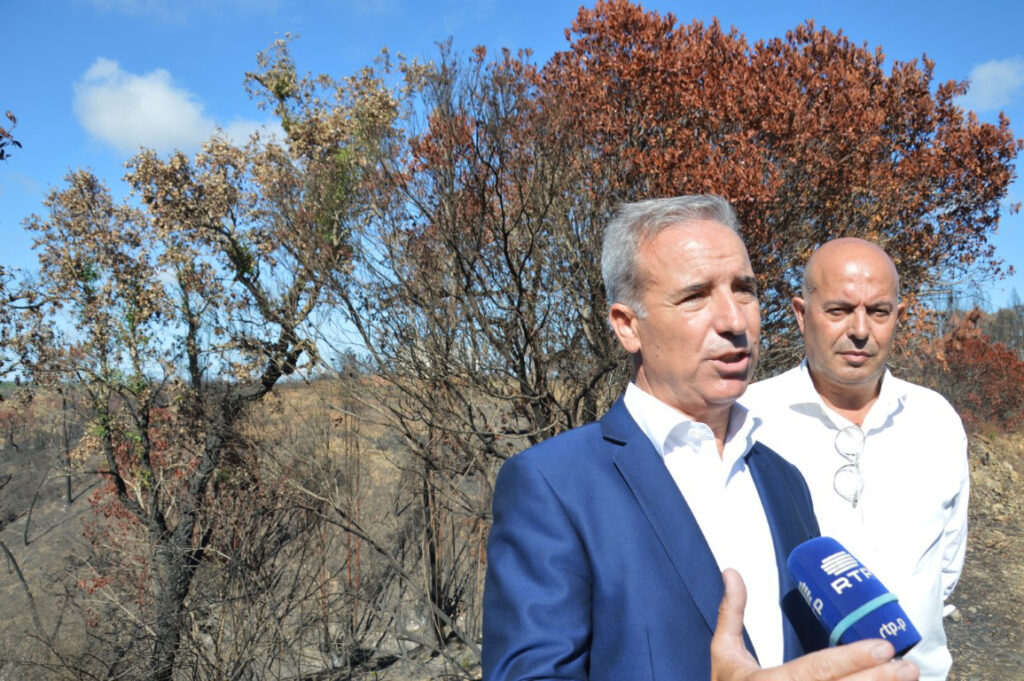
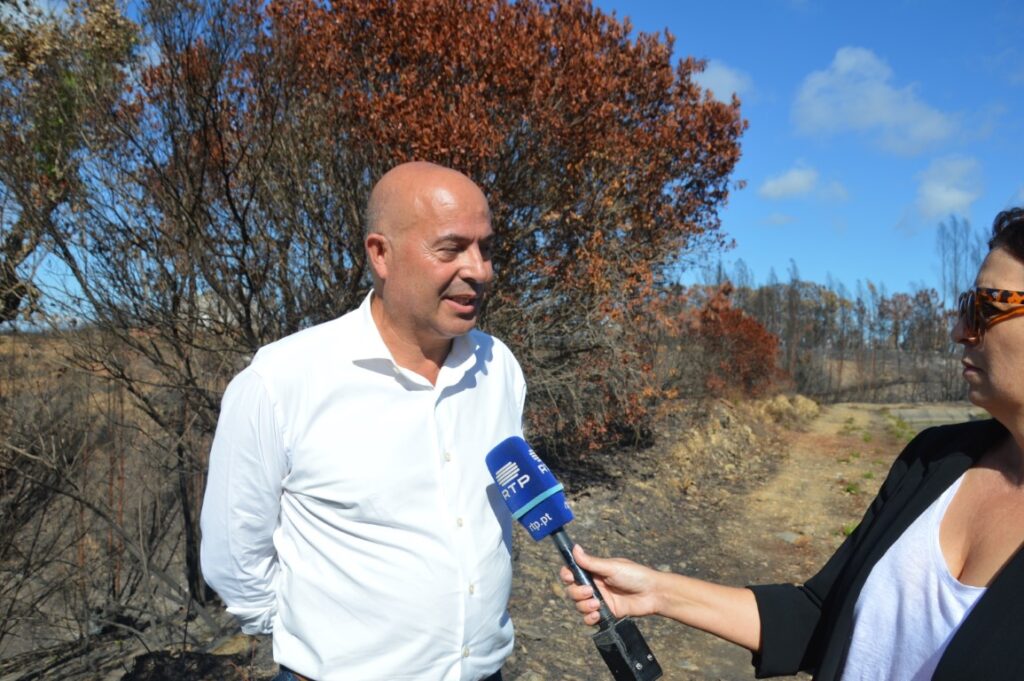
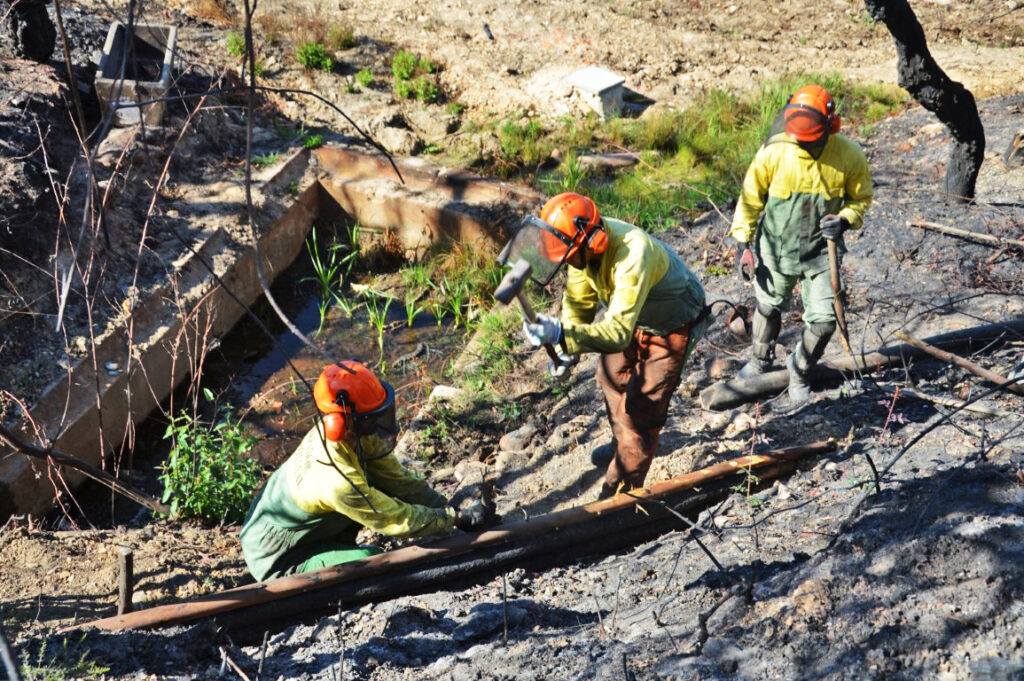
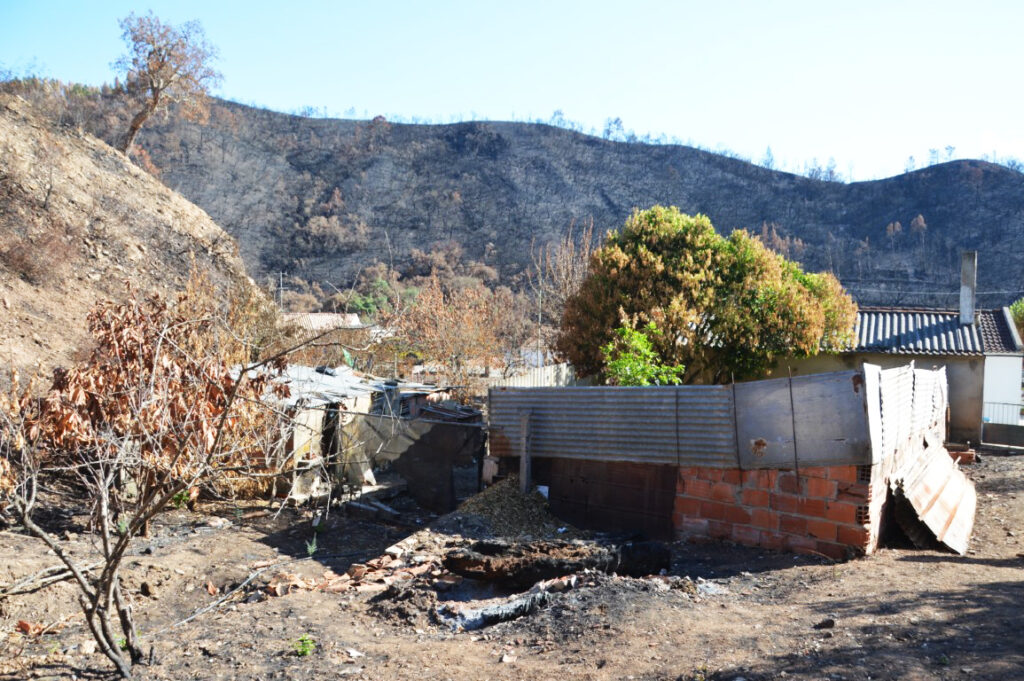
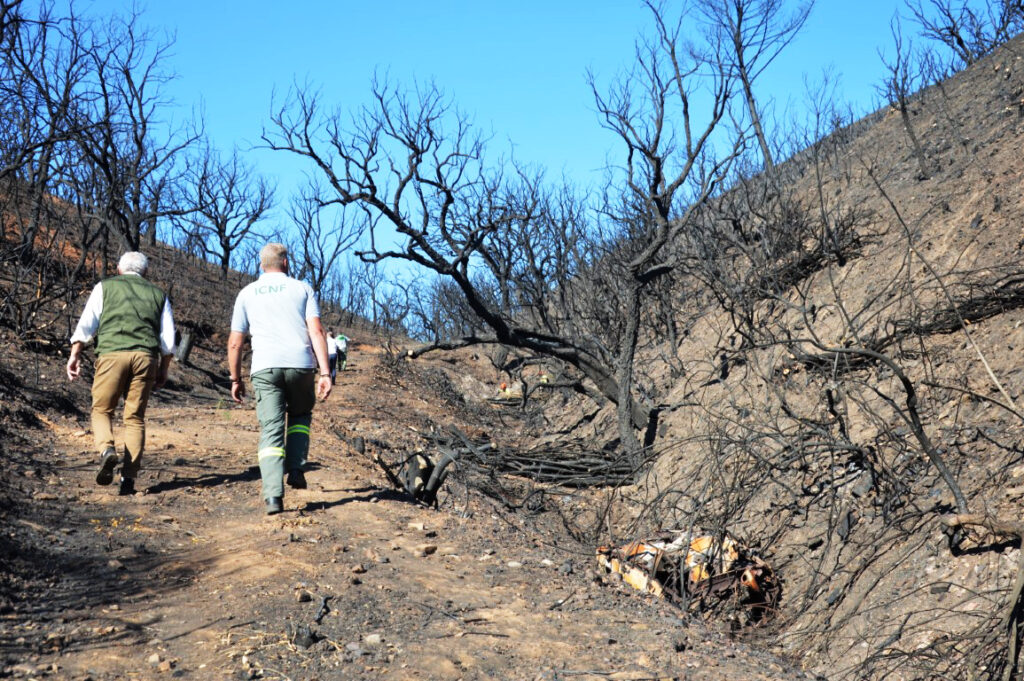
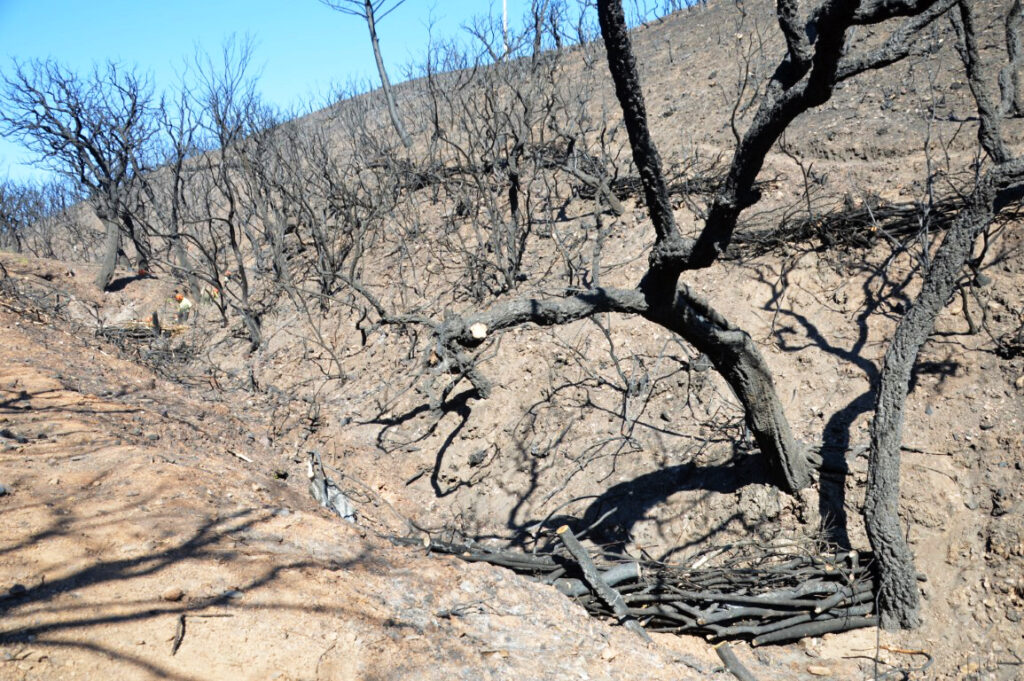

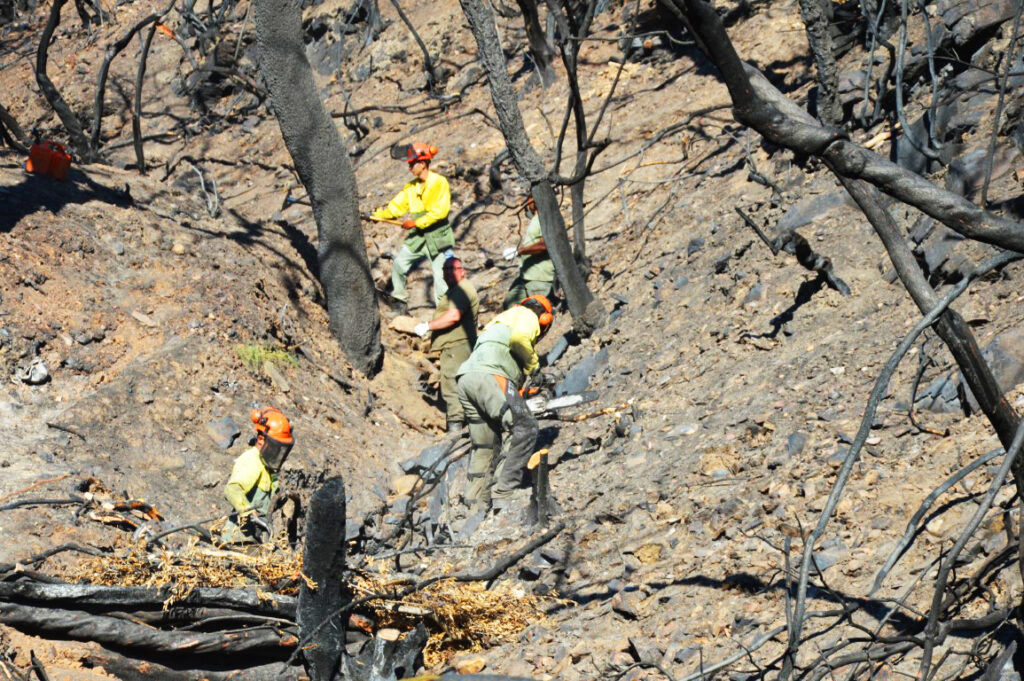


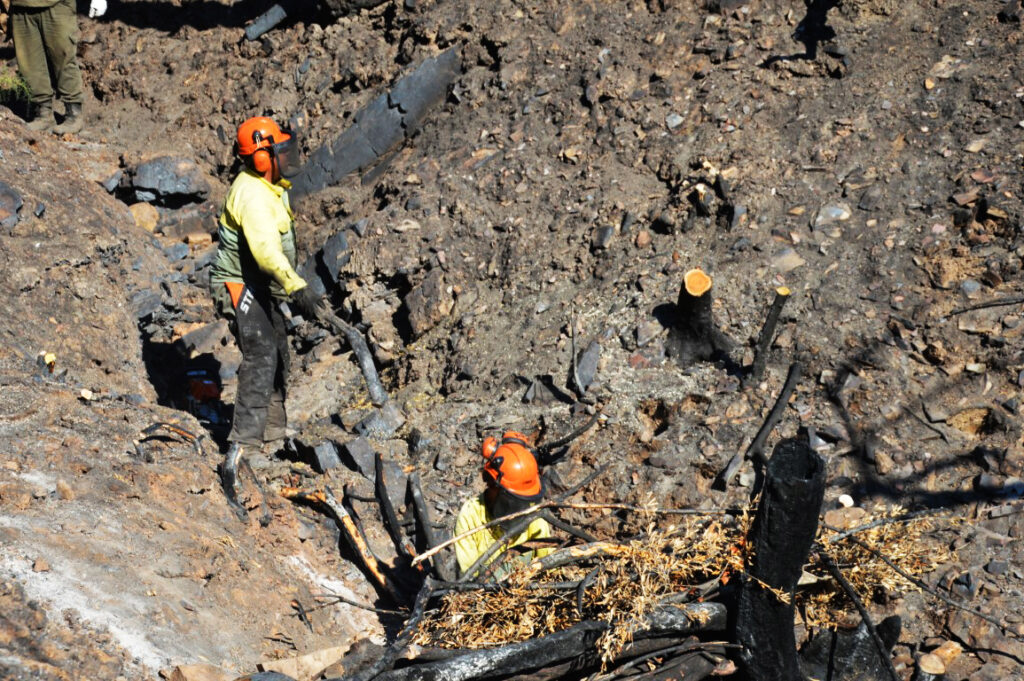
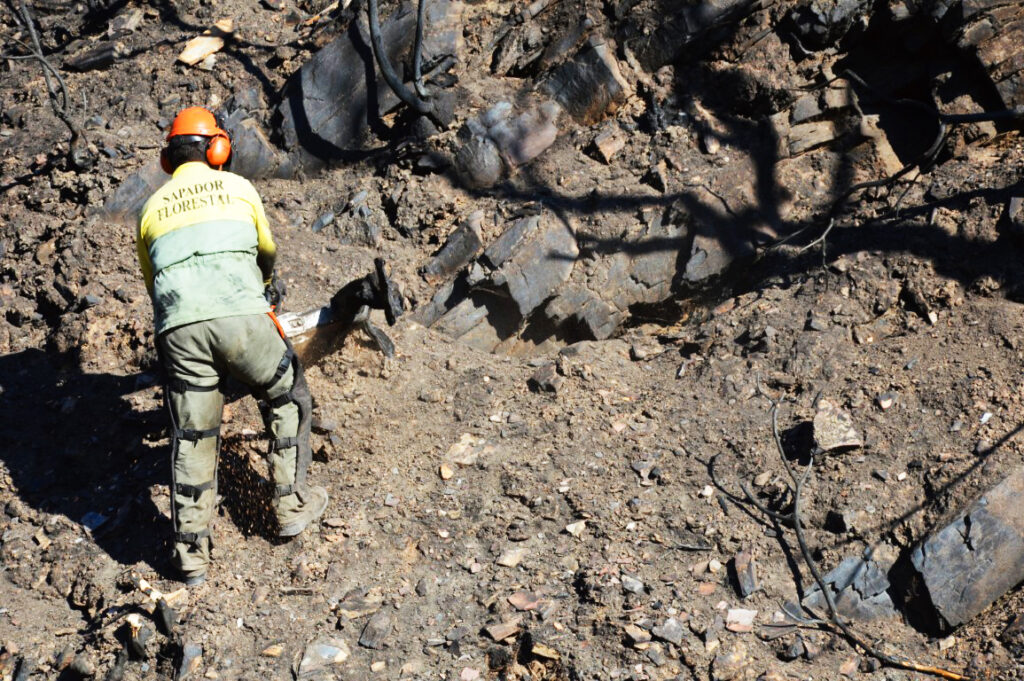



















Comments